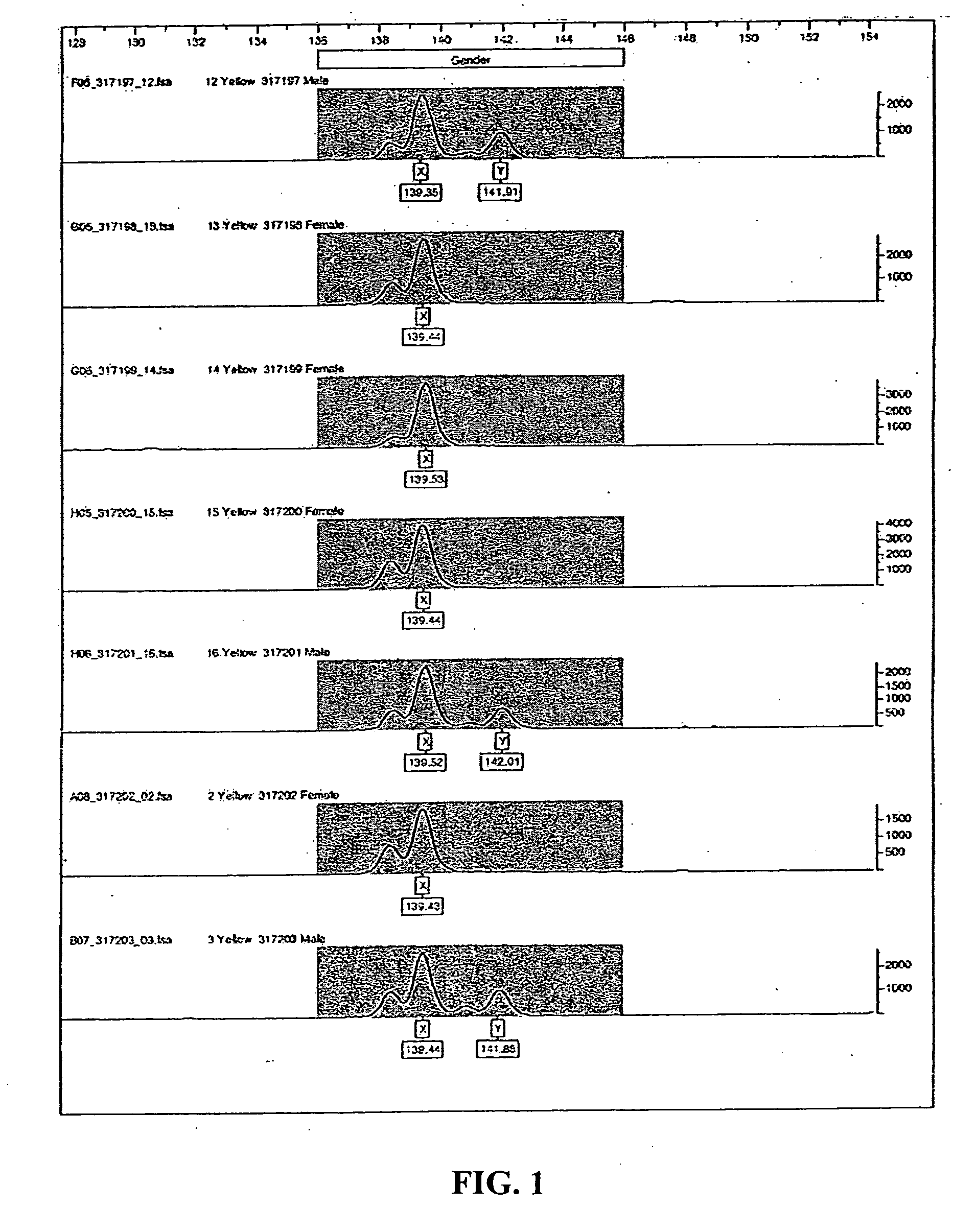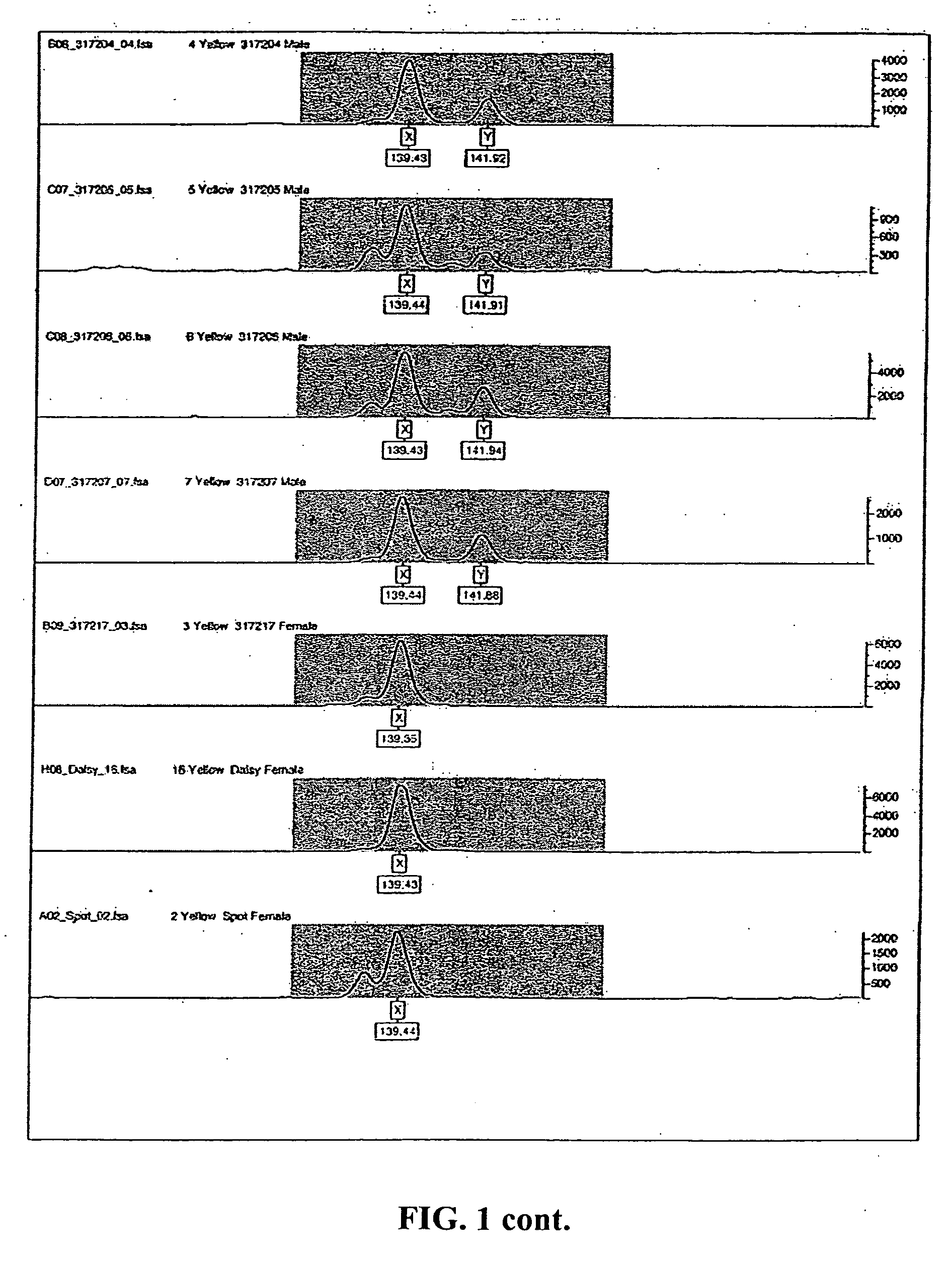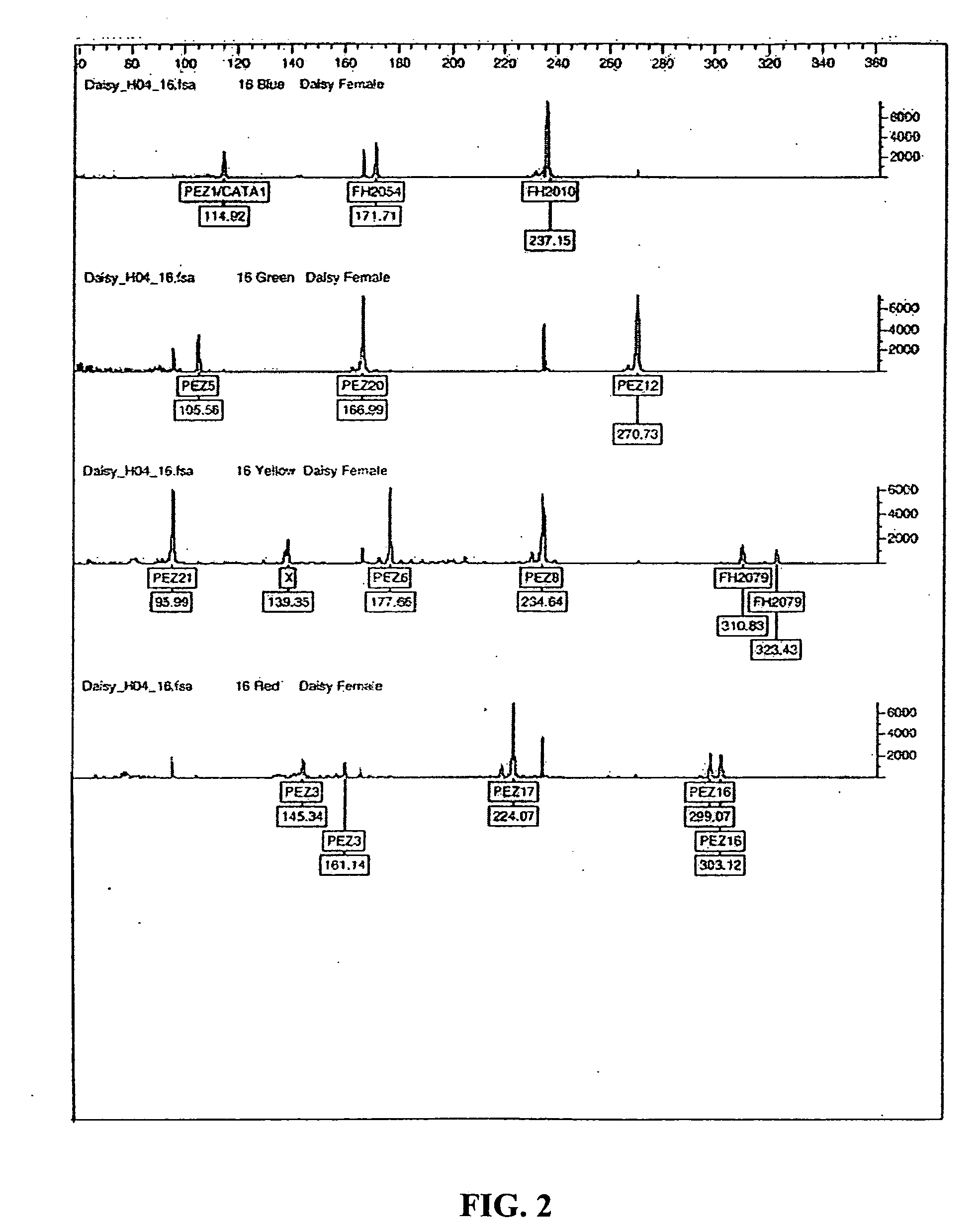Compositions and methods for determining canine gender
- Summary
- Abstract
- Description
- Claims
- Application Information
AI Technical Summary
Problems solved by technology
Method used
Image
Examples
Embodiment Construction
Determination of Canine Gender
[0090] Canine Amelogenin Primer Design
[0091] All canine DNA samples analyzed in this example, were dog DNA samples. Several sets of primers were designed based on similarities among canine, human and other mammalian sequences corresponding to several sites along the amelogenin genes. One set of primers, BFK90004 (SEQ ID NO:2) and BFK90006 (SEQ ID NO: 1), when used to PCR amplify male or female canine DNA, produced many bands on an agarose gel although the expected size (somewhat larger than 2000 base pairs, based on human sequence) was very faint from female canine DNA and strong from male canine DNA. Primers BFK90004 (SEQ ID NO:2) and BFK90006 (SEQ ID NO:1) correspond to sequences in the human amelogenin exons 3 and 2 and span intron 2 which is about 1940 bp on the X chromosome and 2500 bp on the Y chromosome. BFK90006 (SEQ ID NO:1), which includes the ATG start codon for the gene, with one degenerate base, is identical within human, equine, bovine and...
PUM
| Property | Measurement | Unit |
|---|---|---|
| Length | aaaaa | aaaaa |
Abstract
Description
Claims
Application Information
 Login to View More
Login to View More - R&D
- Intellectual Property
- Life Sciences
- Materials
- Tech Scout
- Unparalleled Data Quality
- Higher Quality Content
- 60% Fewer Hallucinations
Browse by: Latest US Patents, China's latest patents, Technical Efficacy Thesaurus, Application Domain, Technology Topic, Popular Technical Reports.
© 2025 PatSnap. All rights reserved.Legal|Privacy policy|Modern Slavery Act Transparency Statement|Sitemap|About US| Contact US: help@patsnap.com



